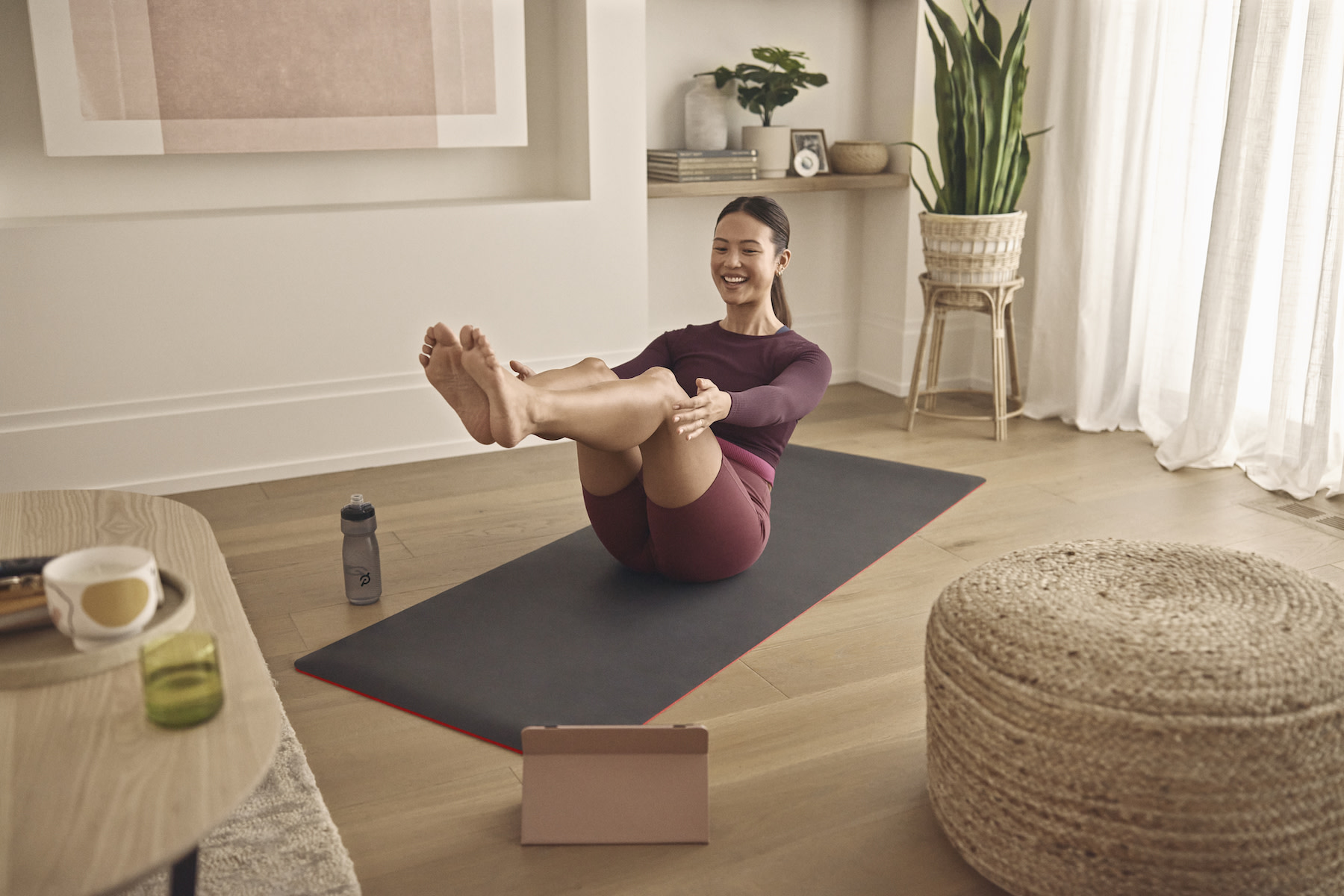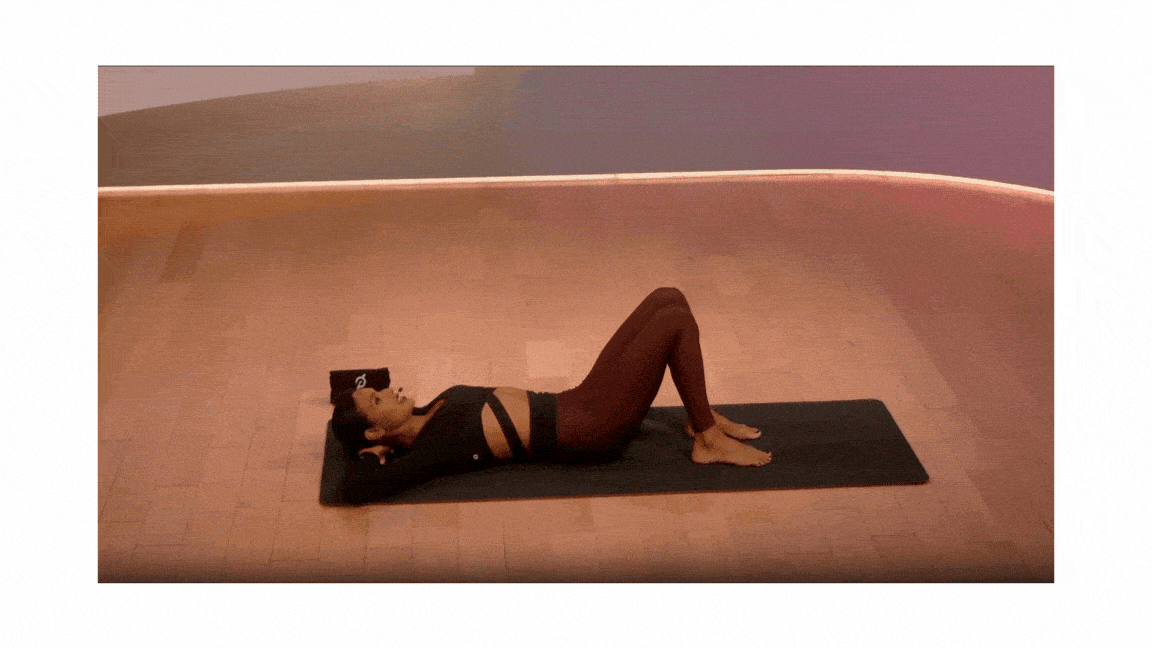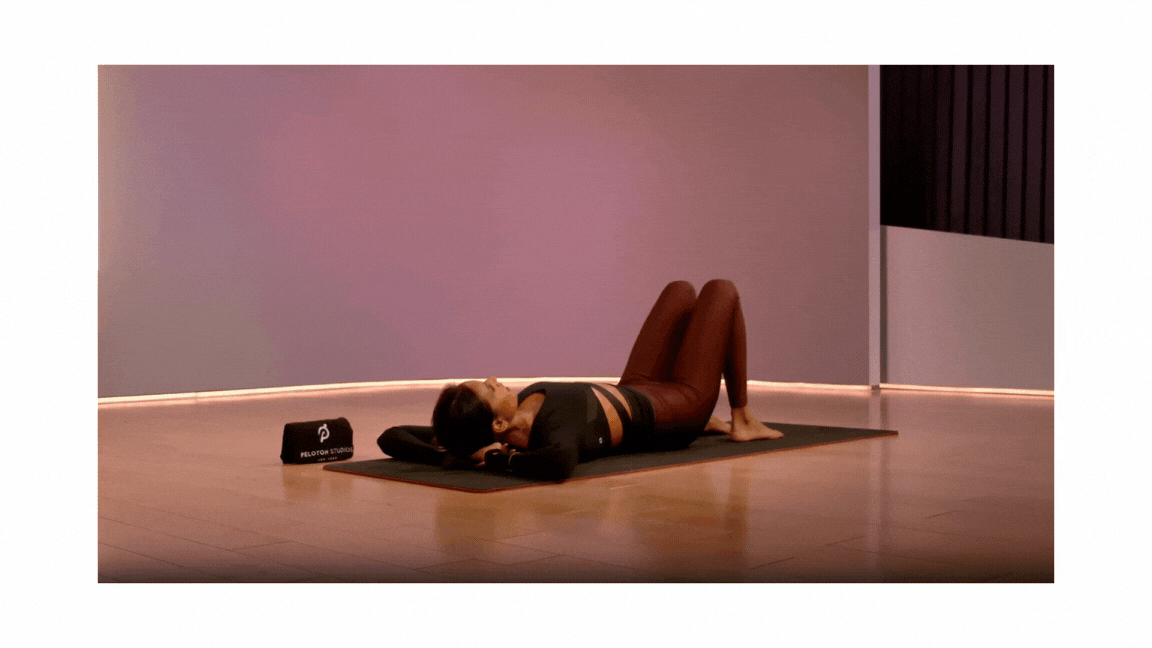
Does Pilates Count As Strength Training?
Pilates classes are a great way to improve flexibility, posture, and more.
By Michele Ross•
Is Pilates Strength Training?
Can You Build Muscle with Pilates?
Building Strength with Pilates Exercises
The Takeaway
Whether you’re Pilates-curious or a regular practitioner, some lingering curiosities are likely to arise: Does Pilates count as a strength-training exercise? How about cardio? Is it enough to build muscle? Do I need to cross-train with other fitness regimens? Although I’ve been practicing different types of Pilates for years, I confess that the answers to these questions weren’t too clear to me until recently.
Discover more ways to reach your goals with Peloton
If you’re in the same boat as I was, you’ll want to keep reading. As we break down the science below, you'll learn the ins and outs of getting stronger with Pilates.
Is Pilates Strength Training?
Peloton instructor Aditi Shah emphatically confirms that Pilates is a form of strength training since it uses your bodyweight as resistance, and can include other tools that help add resistance to the workout. “Pilates [utilizes] bodyweight strength, though sometimes we add resistance with blocks, towels or other props,” she shares.
But strength is not the only benefit from Pilates, when you practice the moves correctly—and consistently at that, which is just as important—you can expect to get more sculpted and more agile. In addition, you’ll become more strategic about how you engage your muscles. This benefit can apply whether you’re taking a Pilates class, sweating it out with another workout, or even performing functional movements by going about your daily life.
Can You Build Muscle with Pilates?
It’s possible to strengthen, improve flexibility, and sculpt with Pilates—but as we’ll soon see, it’s typically not enough on its own to achieve significant muscle gains. At any rate, Pilates helps to maintain muscle since it’s a form of resistance training, Aditi notes. Many Pilates exercises incorporate the full body (or, at the very least, a single Pilates class will typically ensure that you work all your muscles at different times).
Still, certain muscle groups tend to take precedence. “Pilates is highly focused on alignment, posture, stability, and moving with integrity, which ends up targeting the core (front and back body), glutes, and in some ways, mobility,” Aditi explains.
The Benefits of Pilates for Muscle Development
Pilates offers countless benefits for your body—not to mention your mind, health, and overall sense of well-being. Yet in most cases, it typically won’t suffice to adequately build muscle. In order to increase muscle mass, you need to continuously level up with added resistance or weight, which involves a process called hypertrophy.
Per the National Academy of Sports Medicine, hypertrophy is “the enlargement of skeletal muscle fibers in response to being recruited to develop increased levels of tension … [which] is characterized by an increase in the cross-sectional area of individual muscle fibers resulting from an increase in myofibril proteins (myofilaments).” In simple terms, increased tension causes muscle fibers to tear, and the body will then fuse those fibers back together along with new muscle cells to build muscle mass. So unless you’re consistently increasing resistance with your Pilates regimen, you’re more likely to maintain, rather than gain, muscle.
However, exceptions exist. For example, a 2012 review in the journal Medicine & Science in Sports & Exercise found that inactive healthy women who practiced Pilates twice a week over nine months experienced hypertrophy of the abdominal wall muscles—especially the rectus abdominis (i.e., the muscles that create a six-pack). Those who are new to Pilates may find that they build muscle at the start—namely since they’ll target muscles they’re not used to activating—yet they may end up hitting a plateau without adding that extra oomph.
But just because Pilates isn’t the ideal workout to build muscle, it doesn’t mean that you should skip it if you want to bulk up. In fact, Pilates offers several benefits that can complement muscle development, including:
Increased muscle strength
Improved endurance
Enhanced flexibility
Better posture and balance
Greater body awareness
These perks can facilitate longer, more effective workouts—including if you choose to do standard weight lifting—all the while providing functional benefits for your body.
Pilates vs. Cardio
Classic Pilates (i.e., the practice in its original form) doesn’t quite count as a cardiovascular workout. That said, certain Pilates exercises and classes—especially those with a cardio or “power” element, or a fusion class—can definitely be challenging enough to elevate your heart rate.
Per a 2019 review in the Journal of Clinical Medicine, Pilates can be effective to improve cardiorespiratory fitness in both healthy individuals and those with aerobic issues. The authors of the review found that Pilates was sufficient to increase VO2 max levels (i.e., the maximum amount of oxygen a person can utilize during maximal exercise). This measurement is considered to be the best indicator of aerobic endurance and cardiovascular fitness.
However, a 2023 study in the Irish Journal of Medical Science found that a single Pilates session created similar cardiopulmonary responses to walking at 3.2 kilometers per hour (roughly 2 miles per hour at low intensity) and offered a lower cardiopulmonary response than walking at 4.8 kilometers per hour (roughly 3 miles per hour at medium intensity).
Most people—even those who practice Pilates adamantly—are primed to experience optimal health benefits by including dedicated cardio regimen in their exercise routines. You should get at least 150 minutes of moderate aerobic activity, or 75 minutes of intense aerobic activity, per week. Depending on the intensity of your Pilates exercises, it could count towards these guidelines, but cross-training is always a good idea.
Pilates vs. Weight Training
Pilates and weight training both count as strength training, so some of their benefits—and even some of their moves—carry over from one to the next. “There are plenty of overlapping exercises (e.g., push ups, hip bridges, planks) and movements (e.g, hip hinges), which are nice to explore in different contexts,” Aditi shares. However, the two fitness regimens have unique differences worth noting.
“Pilates creates stability, alignment, and structure in the body, as well as proprioception that can carry into weight training,” Aditi explains. Moreover, she says that Pilates doesn’t traditionally incorporate weights, but some modern classes do to boost the strength-building and toning elements. Then we have weight training, which is the gold standard to increase muscle mass, maintain the muscle mass you have, and combat muscle loss as you age. (Just remember that consistency is key, and that you’ll need to increase weights to continuously build muscle.)
“Both Pilates and weight training are incredible exercise modalities on their own, but they also complement each other very well,” Aditi summarizes.
Building Strength with Pilates Exercises
Pilates is a terrific, low-impact modality that can sculpt your muscles, boost endurance, and allow you to feel more comfortable and confident in your body. A standard Pilates class is likely to include a range of moves that will activate all of your muscles. Certain moves, like planks and hundreds, will also provide full-body strengthening benefits on their own.
Ahead, see which Pilates exercises Aditi prizes for their strength-training powers and versatility.

1. Toe Taps
“I love toe taps because they are so versatile,” says Aditi. “There are so many ways to modify this exercise depending on your goals and what you need each day. You can do single leg toe taps, double leg toe taps, toe taps combined with leg lifts, or toe taps combined with leg circles.” She notes you can also leave your head on the ground, or lift it up to further activate your core.
They’re even suitable for people who experience lower back pain, as they don’t add extra pressure to the lumbar spine.
How to do basic single-leg toe taps:
Lay on your back with your legs in tabletop position.
Keep the 90-degree angle bend in your leg as you tap the right toes down onto the mat. Maintain stability in your lower back and pelvis as you return your leg back to tabletop position.
Repeat with the left leg and continue to alternate sides.
Muscles worked: Toe taps activate the deep transverse abdominis as well as the rectus abdominis.

2. Hip Bridges
Aditi prizes hip bridges not only to build strength but also because they’re highly modifiable. “This exercise could be a static hold, in movement, single leg or double leg, or with the heels down or up,” she explains. (In her own classes, available to stream on the Peloton app, she cues the last variation as a kitten heel.) “Of course, you can add even more movement, like in the classic Pilates exercise shoulder bridge.”
How to do a basic hip bridge:
Lay on your back with your feet flat on the mat at hips’ width apart.
Press your feet down as you lift your hips up, keeping the pelvis in a neutral position.
Hold this basic hip bridge, making sure to balance your inhales and exhales, before you slowly lower down to the starting position.
Muscles worked: This Pilates move targets the glutes (especially the gluteus maximus), as well as the hamstrings and transverse abdominis.
3. Three-Dimensional Breathing
When you think of building strength with Pilates exercises, a breathing technique might not immediately come to mind. However, breath is one of the six principles of Pilates; it’s even one of the three foundational principles outlined by founder Joseph Pilates himself. Moreover, from a functional standpoint, there are three groups of respiratory muscles: the diaphragm, the rib cage muscles, and the abdominal muscles.
Simply put, breathing is a (pardon the pun) core aspect of Pilates—and one that you should focus on throughout your entire practice. For a dedicated breathing exercise, Aditi recommends three-dimensional breathing in particular. “It’s so simple, but breathing in this way is so healthy for many different systems in our body,” she shares.
How to practice three-dimensional breathing:
Sit tall in a comfortable position. Imagine you’re breathing up and down the entire length of the spine, side to side, widening the ribcage, and from the front body to back body.
If desired, place your hands on your body to feel your breath.
The Takeaway
By this point, you know that Pilates absolutely counts as strength training. It can help you get stronger and more toned, boost your endurance, and maintain muscle (among a host of additional benefits for your body, mind, and spirit). However, you’ll want to opt for traditional weight lifting if your primary goal is to build muscle. To get an adequate cardiovascular workout to benefit your overall health and wellness, it’s also worth integrating aerobic exercises—like running, hiking, swimming, and cycling—into your fitness regimen. In both cases, Pilates has the potential to help you make progress, but it’s not a one-and-done deal.
As great as Pilates is for many aspects of your health, mixing things up with different modalities can help keep your body strong, stable, and agile for years to come. When you keep your body guessing, you keep both your body and brain in good shape. Why not switch things up by strength training with Pilates one day, getting your cardio in on the Tread the next, and using free weights the day after? The Peloton App makes it easy to be consistent, keep your motivation high, and enjoy versatile forms of movement to stay strong and active from one day to the next.

Peloton App
Access thousands of classes with no equipment needed.
This content is for informational and educational purposes only and does not constitute individualized advice. It is not intended to replace professional medical evaluation, diagnosis, or treatment. Seek the advice of your physician for questions you may have regarding your health or a medical condition. If you are having a medical emergency, call your physician or 911 immediately.
Level up your inbox.
Subscribe for a weekly dose of fitness, plus the latest promos, launches, and events.
By providing your email address, you agree to receive marketing communications from Peloton.
For more about how we use your information, see our Privacy Policy.





